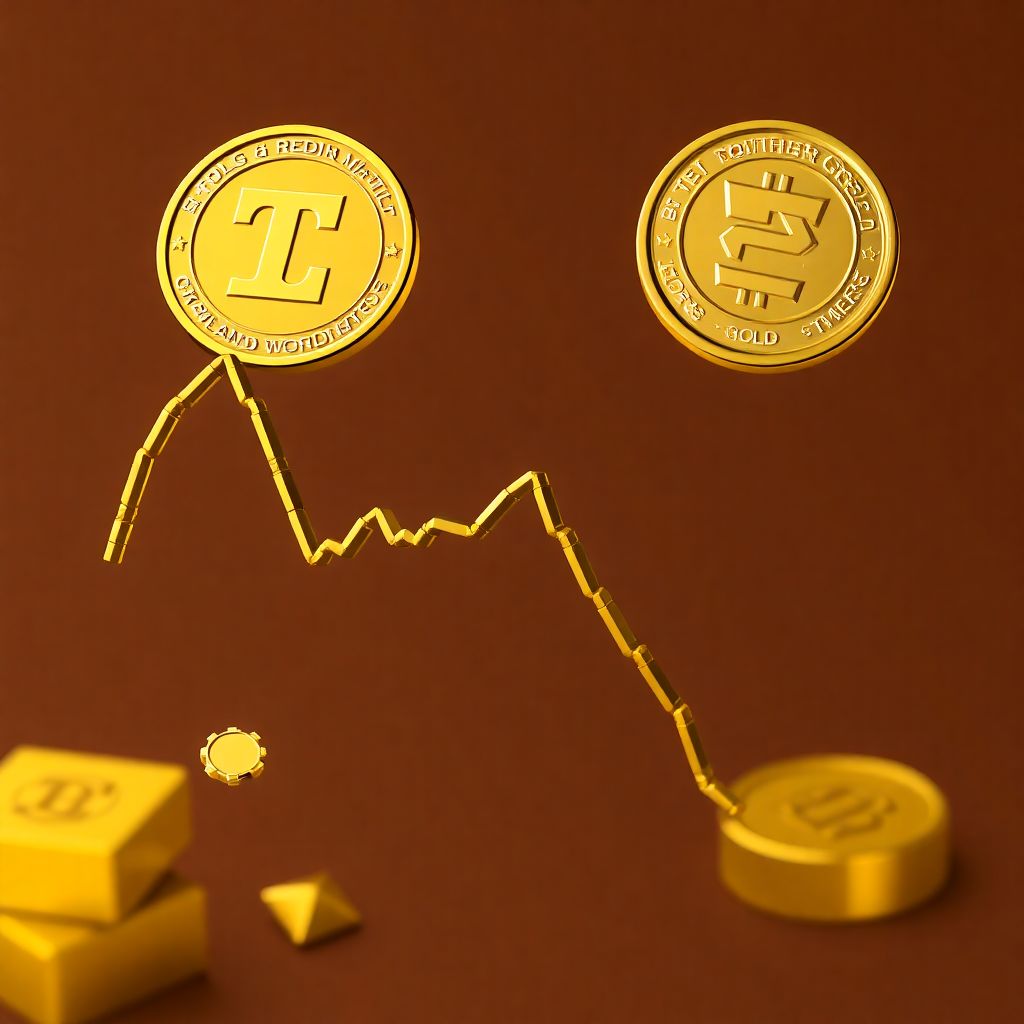Tokenized gold assets, Tether Gold (XAUt) and Pax Gold (PAXG), have experienced a sharp 6% drop in value over the past 24 hours, reflecting the broader downturn in the physical gold market. This synchronized decline came as gold suffered its most significant intraday loss in more than a decade, plunging by around $200 in a single day, and dragging the prices of its digital counterparts down with it.
On October 17, 2024, XAUt and PAXG were trading at highs of approximately $4,391 and $4,430 respectively, riding the wave of gold’s rally to new all-time highs. However, as traditional markets responded to a series of upbeat earnings reports and investor sentiment shifted toward riskier assets, gold lost its shine. The result was a swift correction, with tokenized versions of gold falling to around $4,120.
While cryptocurrencies such as Bitcoin gained approximately 2% during the same period—rising above $112,000—tokenized gold assets diverged from the digital asset market’s generally positive momentum. Analysts are beginning to suggest that we may be witnessing the early stages of a capital rotation out of traditional safe-haven assets like gold and into higher-risk, higher-reward instruments such as Bitcoin and equities.
The broader financial markets saw a surge in equities, buoyed by strong corporate earnings that helped boost investor confidence. This risk-on sentiment rippled through to crypto markets, further distancing Bitcoin and other digital currencies from gold. The selloff in gold was exacerbated by a rapid change in investor appetite, favoring growth-oriented assets over traditional hedges.
Economist and long-time gold proponent Peter Schiff weighed in on the sharp decline, calling it “a shakeout,” but argued that the volatility provides an opportunity—not for Bitcoin, but for gold itself. According to Schiff, despite the drop, gold remains above $4,100, which was a record high just days earlier. He suggests Bitcoiners should seize this moment to exit what he calls “fool’s gold” and reinvest in physical gold, which he views as the true store of value.
The correlation between tokenized gold assets and physical gold is central to understanding these price movements. XAUt and PAXG are backed by physical reserves of gold, and their valuations are closely tied to spot market prices. Therefore, any significant movement in gold is almost immediately reflected in these digital assets. This makes them a direct proxy for gold in the crypto ecosystem, offering exposure to the precious metal without the need for physical storage.
The recent price action also raises questions about the role of tokenized commodities in a shifting macroeconomic environment. As blockchain-based assets, XAUt and PAXG offer advantages such as easy transferability and fractional ownership. However, they are not immune to the same market pressures that affect traditional commodities. When institutional and retail investors pivot away from gold, tokenized gold assets follow suit.
This event also underscores the growing divergence between Bitcoin and gold as competing safe-haven assets. While both have historically been seen as stores of value, their behavior during times of market stress is increasingly distinct. Bitcoin’s recent upward trend amid gold’s crash could indicate a maturing narrative around digital assets as a hedge, especially among younger and more tech-savvy investors.
Moreover, the decline in tokenized gold comes at a time when stablecoins and other asset-backed tokens are gaining traction in decentralized finance (DeFi) ecosystems. The volatility in gold-backed tokens could temporarily limit their appeal as collateral or trading instruments within DeFi platforms, which often rely on price stability for liquidity provisioning and lending activities.
Additionally, institutional interest in tokenized gold may wane if traditional gold continues to underperform against equities and cryptocurrencies. Asset managers and hedge funds are likely to reassess their exposure to gold-linked instruments, reallocating capital toward more dynamic sectors, including AI, green energy, and blockchain-based assets.
Looking ahead, the performance of XAUt and PAXG will likely continue to mirror gold’s trajectory. However, the technological advantages of these tokens may allow them to recover more quickly or find niche use cases that physical gold cannot fulfill—such as integration into smart contracts or use in cross-border settlements.
In conclusion, the synchronized 6% drop in Tether Gold and Pax Gold highlights the strong correlation between tokenized assets and their underlying commodities. This event not only reflects market sentiment but also adds to the ongoing debate about the future of safe-haven investments in an increasingly digital world. As capital continues to flow into riskier assets and Bitcoin strengthens its position, gold—and by extension, its tokenized forms—may face an uphill battle to maintain relevance in modern portfolios.

